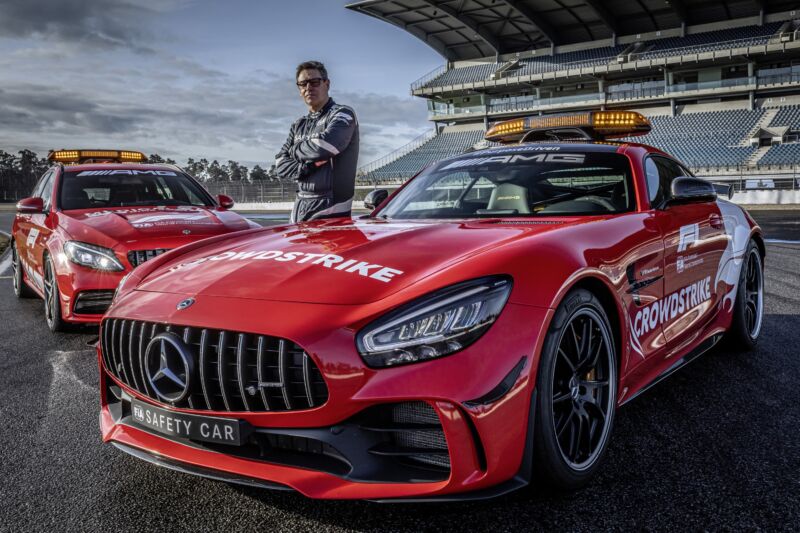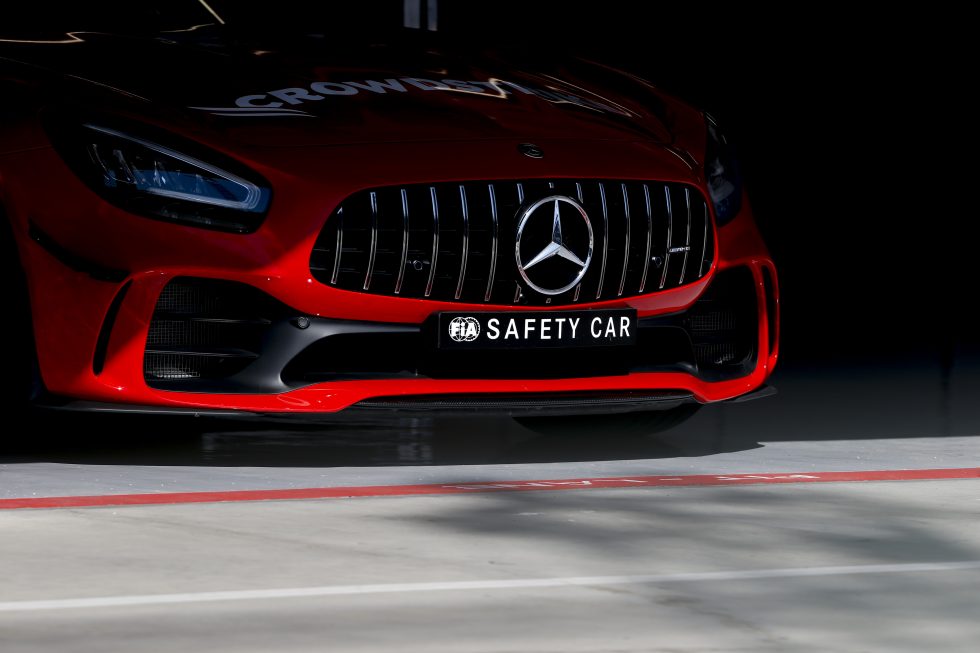
Enlarge / Bernd Mayländer stands next to the Formula 1 safety car, a Mercedes-AMG GT R. The station wagon in the background is the F1 medical car. (credit: Mercedes-AMG)
Despite following Formula 1 closely for several decades, I still don’t feel comfortable making predictions about the races. Take the recent Turkish Grand Prix, for example. Were I a betting person, I’d have said that the race, held in treacherous and changing weather, would be interrupted by at least one safety car period, perhaps more. Instead, safety car driver Bernd Mayländer and his co-driver got to watch the entire race from the comfort of their car without being called upon by race control.
The use of a pace car has been well-established in the US, but for much of F1’s existence, the sport relied on trackside, flag-bearing marshals to control or neutralize a race in the event of a crash. That changed in 1993, when F1 got over its case of “not invented here” and adopted the safety car, calling on the service for the first time at that year’s Brazilian Grand Prix.

Mayländer and his co-driver wait to be called into action by race control. (credit: Jiri Krenek/Mercedes-AMG)
On that occasion, the car was a rather mundane Fiat Tempra sedan, and other races saw the job performed by a Ford Escort Cosworth RS, Honda Prelude, and even a Lamborghini Diablo, depending on what each race promoter organized. But in 1996, the sport entered into a partnership with Mercedes-Benz, which has supplied the vehicles ever since. (This year, the company was joined by Aston Martin—which now uses Mercedes engines—with the two companies splitting the races between them.)
